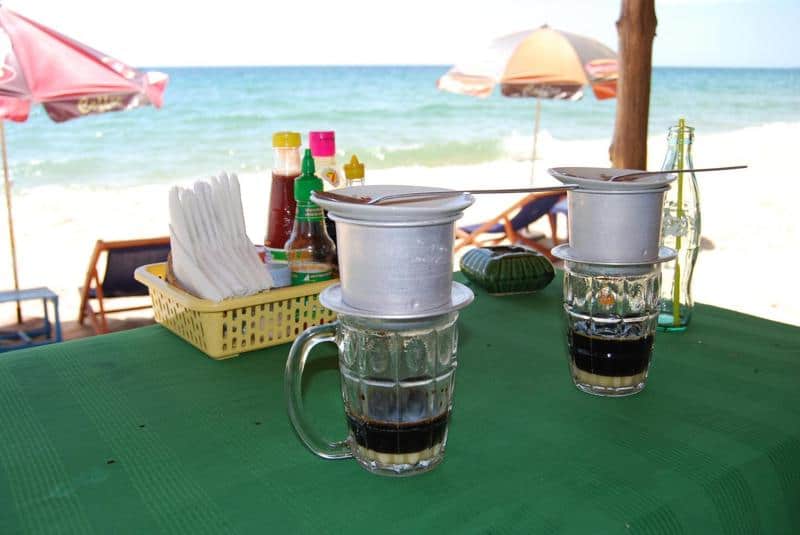Are you looking for a refreshing and energizing start to your day without worrying about histamine intolerance? Look no further than low histamine coffee. In this article, we will explore the concept of low histamine coffee and its benefits in providing you with a revitalizing morning routine.
Histamine intolerance is a condition in which individuals experience adverse reactions when consuming foods high in histamine. For those sensitive to histamine-rich foods like coffee, this can mean starting the day with uncomfortable symptoms such as headaches, congestion, or skin rashes. However, low histamine coffee offers an alternative solution that allows you to enjoy your favorite beverage without these troublesome side effects.
Regular coffee contains varying levels of histamine, which can trigger allergic reactions or worsen symptoms for those with histamine intolerance. By opting for low histamine coffee, you can minimize these risks and ensure a more enjoyable experience. Not only does low histamine coffee reduce the chance of allergic reactions, but it also helps alleviate the symptoms associated with histamine intolerance. Say goodbye to morning discomfort and hello to a more energized start.
In the following sections, we will delve into the link between coffee and histamine, highlight the benefits of consuming low histamine coffee, guide you on choosing the best beans for this purpose, explore different brewing methods to decrease histamine levels in your cup of joe, share delicious recipes incorporating low histamine coffee, and provide practical tips for seamlessly incorporating it into your daily routine.
So grab your mug and get ready to discover how low histamine coffee can revolutionize your mornings.
Understanding Histamine Intolerance
Histamine intolerance is a condition in which an individual has difficulty breaking down and clearing histamine from the body. Histamine is a naturally occurring chemical involved in various bodily functions, including the immune response, digestion, and regulating sleep-wake cycles. However, for individuals with histamine intolerance, the body’s ability to process and eliminate excess histamine is impaired, leading to a build-up of this compound in the bloodstream.
Common symptoms of histamine intolerance include headaches, hives or other skin reactions, nasal congestion or runny nose, digestive issues such as bloating or diarrhea, and fatigue. Keep in mind that these symptoms can also be caused by other factors, so it’s important to see a healthcare professional for a proper diagnosis.
Histamine-rich foods can trigger symptoms in individuals with histamine intolerance. These foods include aged cheeses, fermented foods like sauerkraut and kimchi, processed meats (such as salami or cured ham), alcoholic beverages (especially wine and beer), and certain fruits like citrus and strawberries. Surprisingly, coffee can also be problematic for those sensitive to histamine.
Coffee contains a compound called N-methylpyridinium (NMP) which inhibits DAO (diamine oxidase), an enzyme responsible for breaking down histamine. This inhibition leads to higher levels of histamine circulating in the body after consuming coffee. For individuals with histamine intolerance, this can exacerbate their symptoms or even trigger allergic reactions such as itching or swelling.
Understanding how coffee affects histamine levels in the body is crucial for individuals with histamine intolerance who want to enjoy their daily cup of joe without experiencing discomfort. Low histamine coffee provides an alternative option for people who are sensitive to regular coffee but still want that energizing boost in the morning. By choosing low histamine coffee varieties and brewing methods that minimize histamine content, individuals with histamine intolerance can enjoy their favorite beverage without worrying about triggering unpleasant symptoms.
The Link Between Coffee and Histamine
Regular coffee can contain high levels of histamine, which can be problematic for individuals with histamine intolerance or allergies. Histamine is a compound that naturally occurs in certain foods and is also produced by the body as part of the immune response. However, some individuals are sensitive to histamine and may experience symptoms such as headaches, rashes, digestive issues, and fatigue when consuming foods high in histamine.
When it comes to regular coffee, the process of roasting the beans actually increases the histamine content. Additionally, if coffee beans are not properly stored or brewed using methods that promote the breakdown of histamine, the levels can become even higher. This means that individuals with histamine intolerance may experience heightened symptoms after consuming regular coffee.
Histamine intolerance is often associated with conditions such as allergies, asthma, eczema, and gastrointestinal disorders. For these individuals, drinking regular coffee can exacerbate their symptoms and make it more difficult to start the day feeling refreshed and energized.
However, there is a solution for those seeking a refreshing and energizing cup of joe without experiencing negative reactions. Low histamine coffee provides an alternative option for individuals with histamine intolerance or sensitivity. This type of coffee has lower levels of histamine compared to regular coffee due to specific sourcing methods and careful processing techniques.
By choosing low histamine coffee, individuals can enjoy their morning brew without worrying about allergic reactions or worsening their histamine intolerance symptoms. With reduced levels of histamine, this type of coffee offers a refreshing start to the day while minimizing potential discomfort or adverse effects.
Benefits of Low Histamine Coffee
Reduced Risk of Allergic Reactions
One of the primary benefits of consuming low histamine coffee is the reduced risk of allergic reactions. Histamine is naturally present in regular coffee, and individuals with histamine intolerance or sensitivity can experience symptoms such as headaches, hives, nasal congestion, or digestive issues when they consume high amounts of histamine-rich foods.
By opting for low histamine coffee, individuals can enjoy their morning cup without worrying about triggering an allergic response. Low histamine coffee has significantly lower levels of histamine, making it a safer choice for those with histamine-related allergies or intolerances.
Alleviation of Histamine Intolerance Symptoms
For individuals with histamine intolerance, drinking regular coffee can exacerbate their symptoms. Histamine intolerance occurs when the body cannot effectively break down and eliminate excess histamine, leading to an accumulation in the body. This imbalance can cause a range of uncomfortable symptoms, including headaches, skin rashes, gastrointestinal distress, fatigue, and even mood changes.
Switching to low histamine coffee can help alleviate these symptoms by reducing the overall intake of histamine. Individuals may find that their digestion improves, skin irritations diminish, and overall energy levels increase when they make the switch to low histamine coffee.
A More Energizing Start to the Morning
In addition to its allergy-reducing properties and symptom alleviation benefits, low histamine coffee can also provide a more energizing start to the morning. Caffeine is inherently stimulating and known for its ability to enhance mental clarity and alertness.
By selecting low histamine coffee options that have been carefully chosen for their lower levels of this compound while still retaining a satisfying flavor profile, individuals can achieve a refreshing and energizing start to their day without compromising on taste or quality.
By opting for low histamine coffee over regular varieties, individuals can enjoy a refreshing and energizing start to their day, while reducing the risk of allergic reactions and alleviating histamine intolerance symptoms. Whether you have histamine sensitivity or simply want to explore new coffee options, low histamine coffee offers a suitable alternative that is both flavorful and beneficial for your well-being.
Best Beans for Low Histamine Coffee
Choosing the Right Beans for Low Histamine Coffee
When it comes to enjoying a refreshing and energizing cup of low histamine coffee, choosing the right beans is crucial. Not all coffee beans are created equal when it comes to histamine content, so it’s important to pay attention to certain factors when selecting your beans.
Varieties of Coffee Beans
There are various varieties of coffee beans available in the market, and some may have lower levels of histamine than others. For those sensitive to histamine, it is generally recommended to opt for Arabica beans rather than Robusta beans.
Arabica beans tend to have lower levels of histamine since they are grown at higher altitudes with cooler climates. On the other hand, Robusta beans are often associated with higher histamine levels due to their lower-altitude cultivation and higher oil content.
Origins and Sourcing Methods
Another factor that can impact the histamine levels in coffee beans is their origin and sourcing methods. Coffee plants that are grown organically and without the use of synthetic fertilizers or pesticides tend to have lower histamine levels. Additionally, certain regions known for their clean farming practices, such as high-altitude regions like Colombia or Ethiopia, may produce beans with lower histamine content.
When purchasing coffee beans, it is also essential to consider how they were processed and stored. Look for brands that prioritize freshness by using air-tight packaging or vacuum sealing methods. It’s also worth checking if the company emphasizes ensuring low-histamine levels during processing and storage.
Additional Tips for Choosing Low Histamine Beans
Here are a few additional tips for selecting low histamine coffee beans:
- Opt for single-origin beans: Single-origin coffees typically have more traceability, allowing you to know more about how they were grown and processed.
- Look for light to medium roasts: Darker roasts can sometimes have higher levels of histamine, so it’s generally safer to choose lighter or medium roasts.
- Consider water processing methods: Some companies use water processing methods, like the Swiss Water Process, which can help reduce histamine levels in the beans.
By being mindful of these factors and making informed choices, you can enjoy a delicious cup of low histamine coffee that provides a refreshing and energizing start to your day while minimizing the risk of histamine-related symptoms.
Brewing Methods for Low Histamine Coffee
When it comes to enjoying a refreshing cup of low histamine coffee, the brewing method you choose can make a significant difference in reducing histamine levels. Here, we will explore two popular brewing techniques that are known to be effective in minimizing histamine content: cold brewing and using specific equipment.
Cold brewing is a method that involves steeping coffee grounds in cold water for an extended period, usually 12-24 hours. This slow extraction process creates a smooth and mellow flavor while significantly reducing the release of histamine. Cold-brewed coffee also tends to be less acidic, making it gentler on the stomach for individuals with histamine intolerance or sensitivity.
Using specific equipment like an aeropress or pour-over dripper can also help lower histamine levels in your coffee. These devices typically have paper filters that effectively trap the insoluble compounds responsible for releasing histamine during the brewing process. By using these methods and ensuring a thorough filtration, you can enjoy a cup of low histamine coffee with minimal exposure to allergenic compounds.
| Brewing Method | Histamine Reduction Level |
|---|---|
| Cold Brewing | High reduction of histamine levels due to slow extraction process |
| Equipment with Paper Filters (e.g., Aeropress, Pour-over Dripper) | Effective filtration reduces insoluble compounds and histamine release |
Incorporating these brewing methods into your daily routine can provide you with a satisfying cup of low histamine coffee that not only energizes you but also minimizes the likelihood of triggering allergic reactions or worsening histamine intolerance symptoms. Experimenting with different brewing techniques and finding the one that suits your preference is a great way to enhance your coffee experience while prioritizing your well-being.
By choosing a brewing method that decreases histamine levels, individuals can confidently enjoy their daily cup of coffee without compromising their overall health. Whether you opt for cold brewing or utilize specific equipment, these methods offer an opportunity to savor a refreshing and energizing start to your day while minimizing the risk of experiencing adverse histamine-related effects.
Delicious low histamine coffee recipes
When it comes to enjoying low histamine coffee, there are plenty of delicious recipes that can take your morning routine to the next level. Incorporating low histamine coffee into various beverages and desserts not only enhances the refreshing and energizing experience but also allows individuals with histamine intolerance to enjoy their favorite flavors without triggering allergic reactions or exacerbating symptoms.
One popular option is to create iced coffee variations using low histamine coffee. For a simple yet delicious iced coffee recipe, start by brewing your preferred low histamine coffee using a cold brew method. Once brewed, pour the chilled coffee over ice and add a splash of dairy-free milk or alternative sweeteners if desired.
You can also get creative by adding flavorings such as vanilla extract, cinnamon, or cocoa powder for an extra kick of flavor. This refreshing drink is perfect for warmer days or for those who prefer cold beverages in the morning.
Another way to incorporate low histamine coffee into your routine is by blending it into smoothies. Start by preparing your usual smoothie base using fruits and vegetables of your choice. Then add a shot of cooled brewed low histamine coffee to give it an energizing boost without the high levels of histamine found in regular coffee. You can experiment with different combinations such as banana-coffee smoothies or berry-coffee blends depending on your taste preferences.
For those with a sweet tooth, consider exploring low histamine coffee desserts. Try making a creamy and rich panna cotta infused with low histamine unsweetened black espresso or concoct a velvety mousse using cocoa powder and whipped coconut cream combined with a shot of decadent low histamine espresso. These desserts not only satisfy cravings but also provide a delightful way to start the day with a touch of indulgence.
Remember, when preparing these delicious low histamine coffee recipes, it’s crucial to ensure that all ingredients are also low in histamine to avoid any potential allergic reactions or symptoms. Experimentation and adaptation can help create personalized recipes that suit individual preferences and dietary restrictions while still providing a refreshing and energizing experience.
Tips for Incorporating Low Histamine Coffee into Daily Routine
For individuals who are sensitive to histamine or have histamine intolerance, incorporating low histamine coffee into their daily routine can be a beneficial choice. Here are some practical tips and suggestions to help make low histamine coffee a seamless part of your day:
- Recommended Serving Sizes: When consuming low histamine coffee, it is important to be mindful of serving sizes. Start with smaller portions and gradually increase as you gauge your body’s tolerance. It is recommended to begin with an 8-ounce cup and adjust accordingly based on your individual response.
- Accompaniment Adjustments: If you enjoy adding milk or creamer to your coffee, opt for non-dairy alternatives like almond milk, coconut milk, or oat milk, as they tend to have lower histamine levels compared to regular dairy products. Additionally, consider sweetening your low histamine coffee with natural sweeteners like honey or maple syrup instead of high-fructose corn syrup or artificial sweeteners.
- Time Your Coffee Consumption Wisely: Some individuals with histamine sensitivity may find it helpful to drink low histamine coffee in the morning rather than later in the day. This can reduce the likelihood of potential disruptive symptoms interfering with sleep quality during nighttime.
- Experiment with Cold Brewing: Cold brewing can be a suitable method for reducing the levels of histamine in your coffee. This brewing technique involves steeping coarse ground coffee in cold water over an extended period, typically 12-24 hours. The resulting concentrate can be diluted or used as a base for various refreshing beverages such as iced coffees or smoothies.
- Storage Considerations: To ensure freshness and minimize the formation of additional histamines, store your low histamine coffee beans in an airtight container in a cool, dark place away from moisture and sunlight. Additionally, avoid pre-ground coffee as it has a higher surface area and is more susceptible to oxidization, which can increase histamine levels.
Incorporating low histamine coffee into your daily routine requires some experimentation and adjustment. It is important to listen to your body and make modifications based on individual sensitivities. By following these tips and being mindful of your choices, you can enjoy the refreshing and energizing benefits of low histamine coffee while minimizing the risk of adverse reactions.
Conclusion
In conclusion, low histamine coffee offers a refreshing and energizing start to the day for individuals sensitive to histamine-rich foods. By understanding histamine intolerance and the link between regular coffee and allergic reactions or exacerbated symptoms, it becomes clear why low histamine coffee is a beneficial choice. Consuming low histamine coffee reduces the risk of allergic reactions, alleviates histamine intolerance symptoms, and provides a more invigorating morning experience.
Choosing the right beans is essential for low histamine coffee. By selecting varieties, origins, and sourcing methods that result in lower levels of histamine, individuals can enjoy their daily cup without discomfort or adverse reactions. Additionally, various brewing methods can be employed to further decrease histamine levels in coffee. Cold brewing or using specific equipment can help produce a smoother and less irritating cup.
For those seeking creative ways to incorporate low histamine coffee into their routine, there are numerous delicious recipes available. From iced coffee variations to smoothies or even low histamine coffee desserts, there are plenty of options to enhance the refreshing and energizing experience of starting the day with low histamine coffee.
Incorporating low histamine coffee into your daily routine is simple with a few practical tips. It is recommended to consume moderate serving sizes and make adjustments to accompaniments as needed. By following these guidelines, individuals can fully embrace the value of low histamine coffee as a refreshing and energizing choice for their morning ritual. Start each day with a cup of low histamine coffee and experience the benefits firsthand.
Frequently Asked Questions
What coffee is low histamine?
Low histamine coffee refers to coffee that has undergone a fermentation process that helps break down the histamine content. This type of coffee is typically made from high-quality beans that are roasted specifically to reduce histamine levels.
The aim is to provide an option for individuals with histamine intolerance or sensitivity, who may experience adverse reactions when consuming foods with high histamine levels. By choosing low histamine coffee, these individuals can enjoy their favorite beverage without triggering unwanted symptoms.
Can you have caffeine on low histamine diet?
Caffeine is known to stimulate the release of histamine in the body. Therefore, individuals following a low histamine diet may need to limit or avoid caffeine consumption.
While everyone’s tolerance will vary, it is generally recommended for those with histamine intolerance or sensitivity to reduce their caffeine intake as part of managing their symptoms. This does not mean all caffeine needs to be eliminated, but moderation and paying attention to individual reactions can be helpful.
Is decaf coffee OK for histamine intolerance?
Decaf coffee is often considered a more suitable option for individuals with histamine intolerance because it typically contains less caffeine compared to regular coffee. However, it’s important to note that decaf coffee can still contain some level of histamines, especially if it has undergone improper storage or handling practices throughout the supply chain.
Similarly, some people may still react to other compounds present in decaffeinated coffee aside from caffeine itself. It’s essential for each person dealing with histamine intolerance to monitor their individual tolerances and consult with a healthcare professional if necessary.
Can people with MCAS drink coffee?
MCAS stands for Mast Cell Activation Syndrome, which involves an abnormal response by the immune system’s mast cells, leading to widespread release of chemicals including histamines. People with MCAS often experience symptoms similar to those with histamine intolerance or sensitivity but on a more severe level.
Whether someone with MCAS can drink coffee will depend on their individual triggers and reactions to specific substances within the coffee beyond just its caffeine content.
What drinks have no histamines?
There are several drink options that are typically considered low in histamines. These include water, herbal teas made from fresh ingredients (such as chamomile or peppermint), certain fruit juices like apple or pear juice, and some vegetable juices (although it’s important to note that fermented vegetable juices may have higher histamine levels).
Non-dairy milk alternatives like almond milk, rice milk, or oat milk can also be lower in histamines compared to traditional dairy milk. However, it is important for individuals with histamine intolerance to be aware of their personal tolerance levels and individual reactions to different beverages, as they can still vary between individuals.








